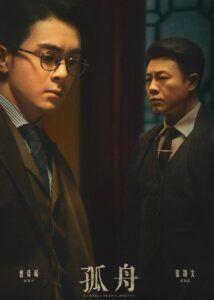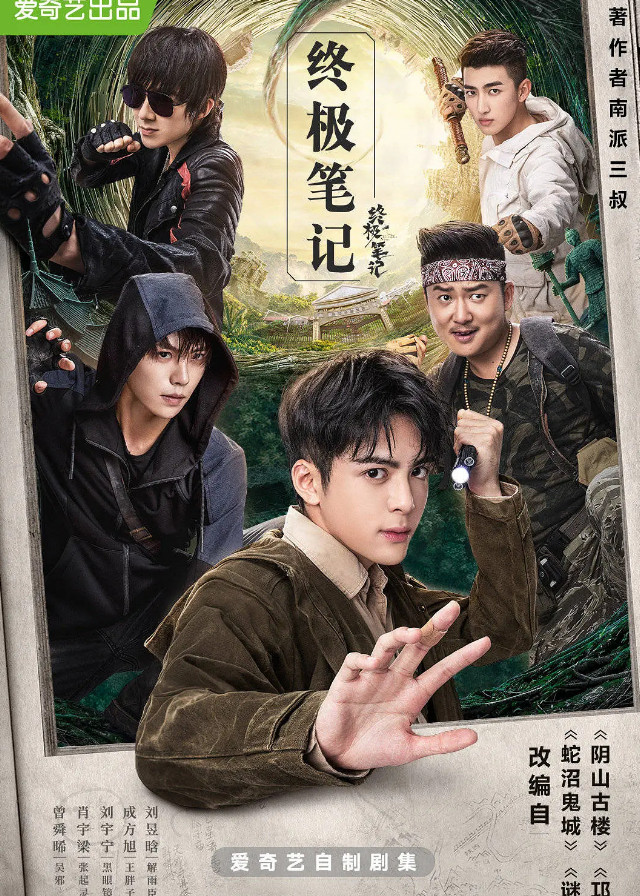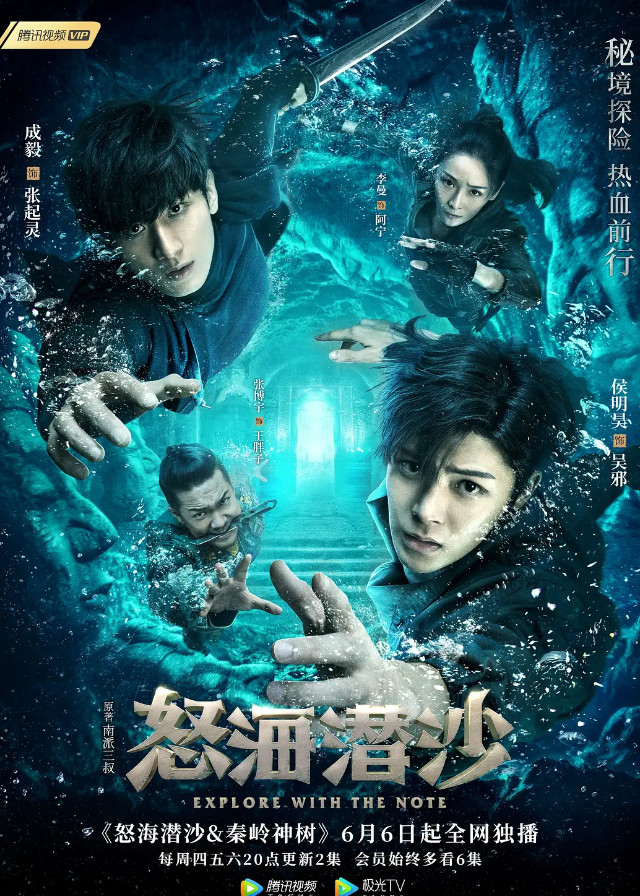Ultimate Note Episode 26 Recap
> Ultimate Note Recap
Fatty was deeply resentful that Sloped-shoulder had harmed his beloved, and he was convinced that finding the entrance to the Zhang family's ancient buildings would, to some extent, avenge her. Meanwhile, Cox Hendry's subordinate was busy taking photos, claiming that manual excavation was too slow and that the images would be sent back to headquarters for technological analysis to locate the entrance. Fatty sarcastically remarked that the photos made him look exactly like Sloped-shoulder.
Wu Xie, hearing this, immediately took the camera and confirmed Fatty's observation. Wu Xie realized they had been followed since arriving in Banai. As soon as they found the tin box near Zhang's bamboo house, Sloped-shoulder had appeared to seize it. This individual seemed to be guarding the secrets of Banai, constantly hindering their efforts. However, Wu Xie pondered why Bald-headed Chu's associate had obtained the photos so easily.
It suggested either the photos themselves were meaningless, or Bald-headed Chu was complicit. Wu Xie decided to visit Bald-headed Chu again, while Zhang remained behind to look after Fatty, as Wu Xie was concerned about Fatty's emotional state and his potential to confront Sloped-shoulder. Meanwhile, Huo Xiuxiu and Xie Yuchen collaborated on a plan. They drafted several letters, imitating Huo Xiangu's tone, and sent them out under her name, pretending to be old friends catching up.
Xie Yuchen assured Huo Xiuxiu that anyone privy to the old secrets would understand the implicit message. Wu Xie found Bald-headed Chu, who readily admitted that Uncle San had indeed arranged for him to give Wu Xie the Banai photo. He also revealed that Uncle San had predicted Wu Xie's second visit and instructed him to hand over another item: a 1976 expedition team subsidy list. Upon seeing this, Wu Xie immediately summoned his associate, Wang Meng, to Changsha.
He deduced that in 1976, during the planned economy, all purchases and salaries were meticulously recorded. This implied Uncle San might be trying to tell him that records of the expedition team members still existed. Wu Xie believed the first team members had died, and the second team members were living under their identities. If he could find the list of the first team, he could identify those "who are dead but still alive."
Their immediate goal was to find these individuals. Without delay, Wu Xie and Wang Meng went to the relevant department to inquire about the 1976 Guangxi Banai expedition team's member profiles. However, their search for names like Chen Wen Jin and Xie Lian Huan yielded no results; they were informed that such information was not publicly accessible. Undeterred, they proceeded to the old address of the Changsha Archaeological Research Institute. Upon arrival, they noticed a security guard discreetly following them.
To avoid suspicion and create an alibi for being there, Wu Xie feigned being an alumnus and even took a photo with a sealed door. Later, he realized the writing on the sealed door, dated 1990, precisely matched his own distinct Shou Jin calligraphic style, reminding him of the person identical to him in the videotape.
As they left, they were asked to sign an entry/exit log, and Wu Xie's signature again, in Shou Jin style, drew the attention of someone reviewing the records. The persistent questions in Wu Xie's mind led him to secretly return to the institute with Wang Meng. Inside the archives, most of the files were moldy due to dampness, yet a large painting leaning against the wall appeared untouched. Sensing something amiss, they moved the painting, revealing a hidden room.
Inside, they found a 1976 archive bag. To Wu Xie's disappointment, it contained only the entry/exit record they had signed earlier that day. It became clear that the other party did not want them to investigate further. Wu Xie sat down in frustration, but Wang Meng discovered a stack of seemingly discarded documents on the floor.
He noticed that the arrangement of these materials—books, notes, periodicals on the right, less useful items further left, and the most crucial ones placed face down—perfectly matched Wu Xie's personal organizational habits. Wu Xie realized that only he, Wang Meng, and his Uncle San knew these specific habits. He then understood: Uncle San's objective was not to find the 1976 expedition data, but to lead him to this particular room.
Following this realization, Wu Xie found another clue left by Uncle San: among solar terms like "Lixia" and "Mangzhong," the term "Xiaoman" was missing. He traced this to "Xiao Man," a wolfhound whose kennel contained the next item. Hidden inside was a drawing of Lei style architecture. Wu Xie explained that Lei style architecture refers to the Lei family, a prominent Qing Dynasty architectural clan responsible for designing most imperial buildings.
Despite their unparalleled brilliance, they had mysteriously abandoned their official positions overnight. The drawing appeared to be a partial blueprint of a private residence. Wu Xie questioned its connection to the Banai expedition, believing a complete set of drawings might provide more clues. Meanwhile, Huo Xiuxiu received a reply to their letters, simply stating, "Let bygones be bygones." Pleased with this response, she arranged to meet Xie Yuchen at a shop on Liulichang East Street.
They suspected the shop owner, Jin Wan Tang, was the one who had sold Cox Hendry the stone rubbing of the silk manuscript. Xie Yuchen, knowing Jin Wan Tang's slippery nature, took an aggressive approach. Under pressure, Jin Wan Tang quickly confessed. He recounted meeting a young Huo Xiangu (Fairy Huo) in early 1963. At the time, Jin Wan Tang was renowned in Beijing's antique circles for his sharp eye.
Huo Xiangu had approached him to be an evaluator for an operation, offering generous compensation, which he promptly accepted. He described the immense scale of the expedition that departed for Mount Four Ladies in Sichuan. The core team consisted of nine individuals, but the overall contingent exceeded two hundred people, possibly thousands including support staff, all equipped with Soviet-era gear.
Jin Wan Tang's task was to remain at the camp and analyze the ancient manuscripts and books brought back by the team. The extensive content suggested the existence of a massive ancient ruins complex in the mountain. He also noted that injured members were frequently returned to camp, indicating a high number of casualties and a perilous operation. Throughout this lengthy and dangerous expedition, he and Huo Xiangu spent three years together.












